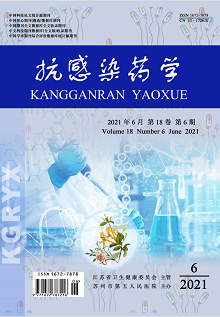TANG zhan-zhan
Objective: To analyze the efficacy of combination of sofosbuvir/velpatasvir and ribavirin in patients with chronic hepatitis C (CHC) with cirrhosis and its influence on HCV-RNA negative conversion. Methods: The medical records of 60 CHC patients with cirrhosis admitted to our hospital from January 2019 to January 2020 were selected and divided into the single-agent group and double-agent group based on different drug regimens, with 30 cases in each group. Patients of the single-agent group were only given sofosbuvir/velpatasvir, while those of the double-agent group were given sofosbuvir/velpatasvir and ribavirin. the therapeutic effects (HCV-RNA overcast rate, rate of sustained virological response, viral recurrence, virology, bounce rate), and the adverse reaction (anemia, bone marrow suppression, headache, loss of appetite, fatigue) rate of 2 groups were compared after treatment, while the changes of liver function index (liver stiffness, propagated, creatinine, AST, TBIL, ALT) were observed before and after treatment. Results: Following up for 6 months, the HCV-RNA overcast rate and sustained virological response rate of the double-agent group were higher than those of the single-agent group (P<0.05), while the viral bounce rate and virological relapse rate was lower than those of the single-agent group (P<0.05). After treatment, the liver hardness, creatinine, AST, TBIL and ALT of the double-agent group were lower than those of the single-agent group (P<0.05), and the ALB was higher than those of the single-agent group (P<0.05). During the treatment, the adverse reaction rate of the double-agent group was lower than that of the single-agent group (P<0.05). Conclusions: In the treatment of CHC patients with cirrhosis, the combination of solophobvavivpatavir and ribavirin can effectively improve liver function indexes, increasing HCV-RNA negative conversion and persistent viral response rate, with high safety.
